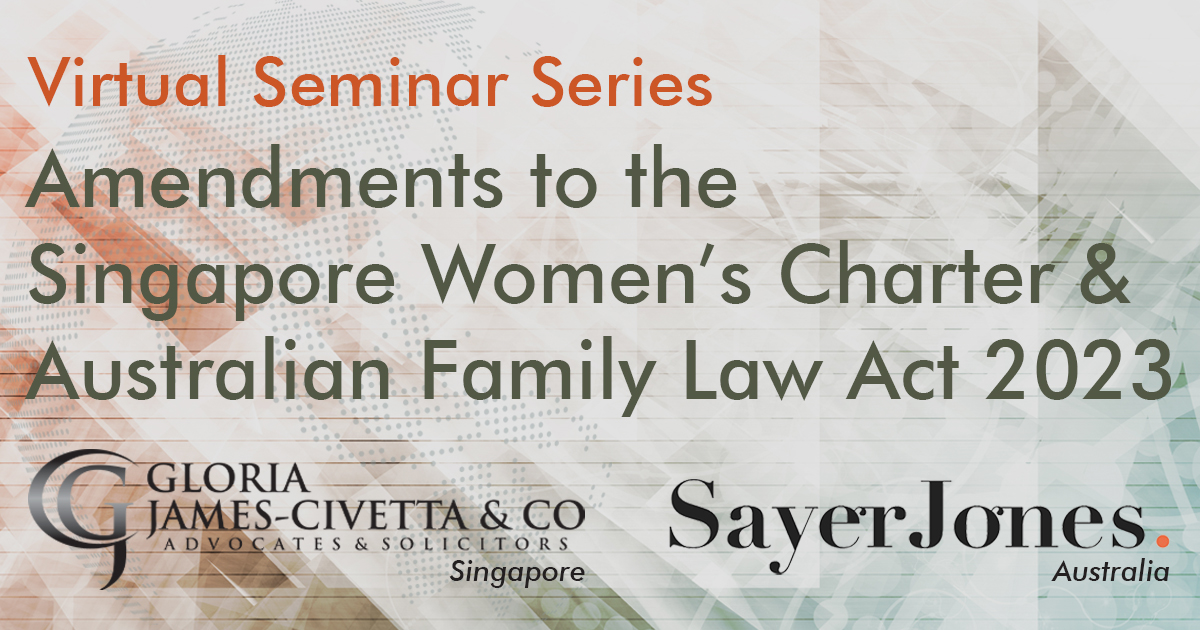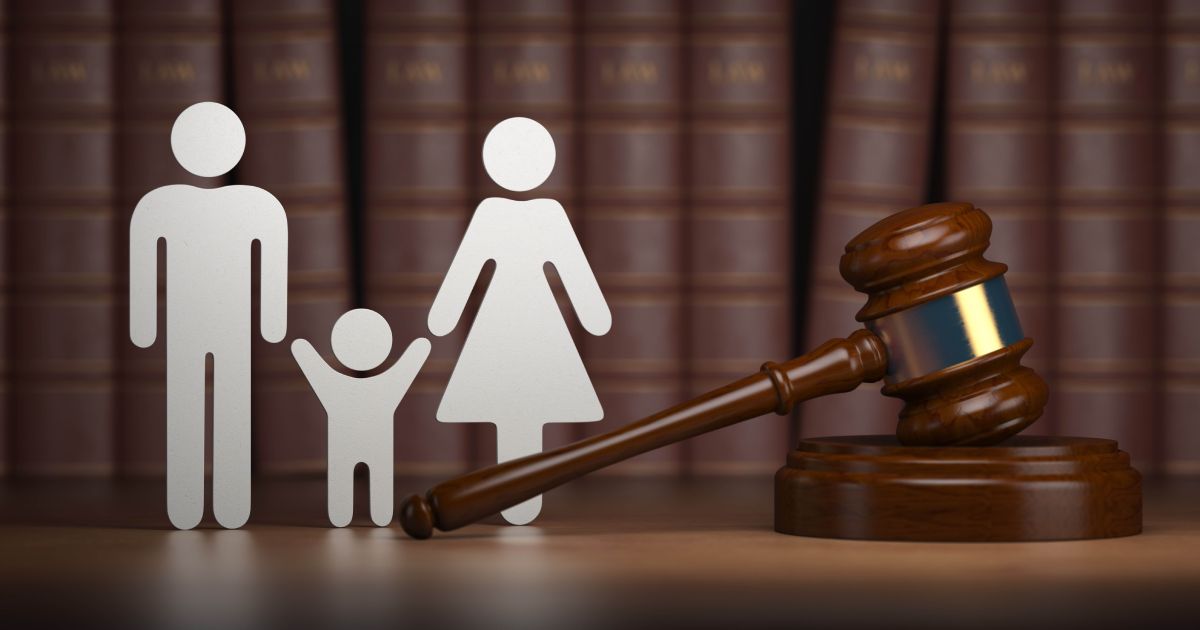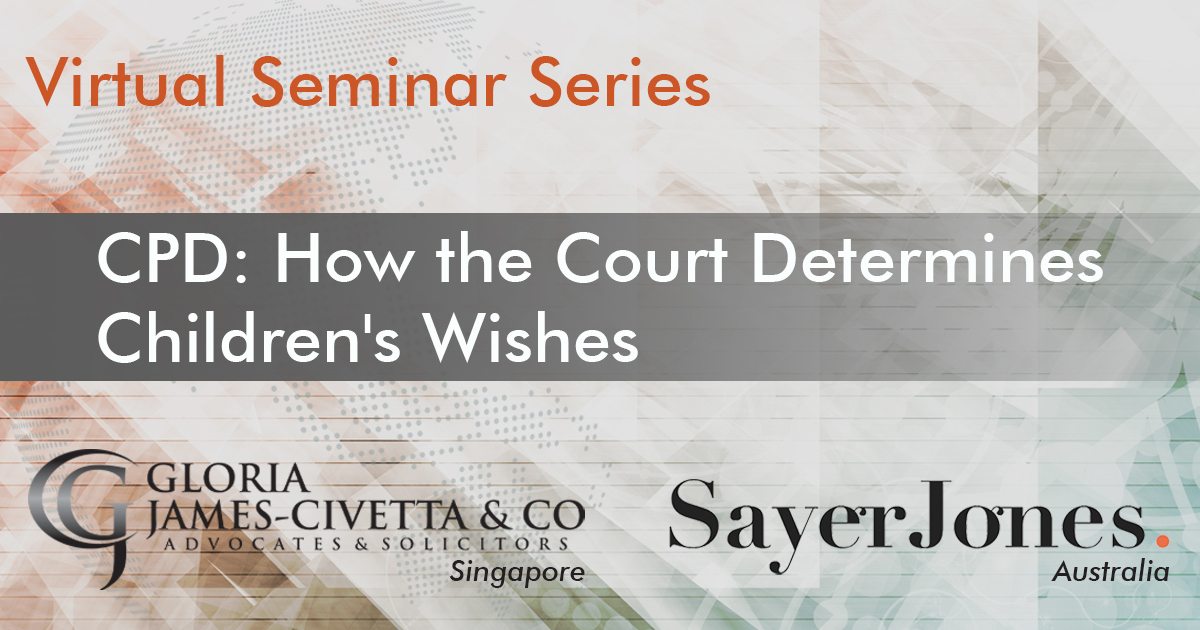USB v USA and another appeal [2020] SGCA 57
Decision Date: 12 June 2020
Judge: Sundaresh Menon CJ; Judith Prakash JA; Debbie Ong J
Family Law – Matrimonial assets – Division
Appeal from USA v USB [2019] SGHCF 5
Background [2] – [3]
- Married 23 February 2011 and IJ granted 16 August 2016 (Approximately 5 ½ years)
- Cohabitation about 12 years. No children.
- 2 children from W earlier marriage lived with couple from the time H & W cohabited.
- Assets within pool of MA were largely a result of W’s successful financial planning.
Parties’ cases [12] – [15]
Issues [16]
- Identification of assets in matrimonial pool
- Appropriate method to determine ratio of division
- Whether an adverse inference ought to be drawn against the parties
The law on matrimonial assets
Identifying pool of matrimonial assets [17] – [35]
- Section 112 (10) of Women’s Charter – examining this provision, clear that the intention of legislature was to confine the Court’s powers of division to assets relating to the marriage.
- Title of Section 112 of WC – provision deals with “power of the Court to order division of matrimonial assets” (i.e assets relating to marriage)
- Section 112 falls under Part X of the Charter – pertains to matters relating to the dissolution of marriage
- It is, thus, axiomatic that the Court must disregard assets which were acquired during pre-marital cohabitation or during any non-marital relationship.
- The ownership of such assets would have to be determined in accordance with general property law principles.
- It should further be emphasised that in determining the length of a marriage, the Court ought not to take into account the period during which parties were cohabiting.
- Marriage confers a legal status on parties which carries with it specified rights and obligations – it is inherently self-contradictory to treat parties as “married” when they were simply cohabiting.
- Nevertheless, assets acquired before the marriage may still be subject to Court’s power of division if these assets are “transformed” into matrimonial assets.
- [19] At the end of a marriage, the assets parties own may be placed in up to 4 different asset categories: –
- Category (a): Quintessential matrimonial assets
- Category (b): Transformed matrimonial assets (“substantial improvement”)
- Can be transformed if regularly used/ enjoyed by members of the family/ benefit of the family. CoA of the view such use must be usual and relatively prolonged rather than casual.
- Category (c): Pre-marriage assets
- Category (d): Gifts and inherited assets
Category (b)
“Substantial improvement” in transformed matrimonial assetsat [22]
- Has an economic connotation
- (1) improvement of such an asset must entail investment of money/ money’s worth for the improvement of the asset
- mere increase in value of asset does not mean asset has “improved”
- there must have been investment of some kind in the asset (i.e renovation works performed on a residential/ commercial property)
- (2) improvement must arise from effort which can be understood as having economic value
- If the asset is a business belonging to 1 spouse, development of the business by the other spouse/ both spouses during the marriage by sustained efforts could transform asset into a matrimonial asset
- Carrying out administrative/ minor public relations activities or being a nominal director may not be sufficient
- There should be an increase in turnover/ in profitability or some other measurable improvement
- Always a question of fact as to how the efforts of the non-owning spouse have contributed to an improvement in the asset
- Ultimately, the court’s focus is on whether there has been some expenditure/ application of effort towards improvement of asset (in an economic sense)
Improvement must come from efforts of both spouses or the other spouse at [23]
- Example of H acquiring and fully paying for a house before marriage and parties do not live in it and after marriage, H renovates it, plain reading of WC would exclude house from the pool.
- To the extent that monies spent on renovation would have been a quintessential MA and there would have to be some accounting of the same in matrimonial pool – but not explored in this decision as this question does not arise.
- CoA noted that generous interpretation of “improvement” (i.e W’’s attendance at H’s business events satisfied requirement she jointly contributed towards improvement of H’s business) may no longer hold true but this is a matter to be decided in an appropriate future case
- CoA noted that such efforts by spouse can still be considered as part of his/her indirect financial contributions and be taken account of when it comes to division exercise
- [25] in the case of either substantial improvement/ family usage, once asset is transformed into matrimonial asset, the whole value of asset will be included in matrimonial pool for division, not just a portion thereof.
Category (c)
- Fundamental purpose of division exercise: – Court’s focus is on identifying material gains of marital partnership<
- It would be wrong to adopt a narrow/ technical reading of “acquired” – it would not be right that an asset is excluded entirely from the pool simply because it was purchased a short time before marriage.
- CoA of the view that evidential difficulties arising in proving the exact value of the portion of the asset acquired during the marriage can be dealt with as a matter of burden of proof: –
- In general, the party who assets that an asset is not a MA/ or only part of its value should be included in the pool bears the burden of proving on the BOP;
- Where an asset is prima facie not a matrimonial asset, burden would lie on the party asserting that it is a MA to show how it was transformed.
- Once necessary evidence produced, the question arises is how the court should quantify the proportion of asset that is to be included in the pool – CoA of the view that particular approach adopted in each case ultimately depends on the evidence and arguments put forward by parties. Courts should adopt a common-sense approach to the calculation, and an appellate court will be slow to intervene with the judge’s exercise of discretion unless it is clearly wrong/ inequitable.
The approach to division [36] – [46]
- Structured approach should continue to apply to short marriages
- CoA rejected the argument that Court should incline towards equality of division in short marriages
- Key characteristic of structured approach – deals fairly with direct and indirect contributions and giving the Court a discretion to set the weightage in terms of the relative importance of direct and indirect contributions. This ability to vary the weightage between direct and indirect contributions is especially useful in a short marriage.
- Direct contributions in short marriages – parties generally have in the possession evidence of their direct contributions (compared to long marriages)
- Indirect contributions in short marriages – less significant, especially those without children. The court may take this into account by ascribing a higher weightage to direct contributions.
- CoA reiterated the court has discretion to adjust weightage of direct and indirect contributions in a short marriage – not compelled to arrive at unequal weightage
- Court may choose to retain equal weightage in short marriages, especially if there are children.
- CoA also added a caveat, adjusting the weightage of direct and indirect contributions should be done as an exception. Where the Court exercises its discretion to adjust weightage, apart from in a short marriage, CoA of the view cogent reasons should be provided to explain the departure from the norm of equal weightage.
- CoA of the view that broad brush approach should be applied with particular vigour in assessing parties’ indirect contributions → in ascertaining the ratio of indirect contributions, the Court should not focus unduly on the minutiae of family life. The court should direct its attention to broad factual indicators when determining ratio of parties’ indirect contributions: –
- Length of marriage;
- No. of children;
- Which party was the children’s primary caregiver.
- Another reason justifying why the broad-brush approach should be adopted is because the evidence is given via affidavit evidence and not cross-examination. As such, it is difficult to determine may of the matters evidencing a party’s indirect contributions to the marriage.
- Courts will take a more flexible approach to evaluate evidence. A spouse’s failure to “prove”, in the strictest sense of the word, what he/she may have done during the marriage does not mean a finding will be made against him/her on this point.
- In light of the procedural constraints inherent in AM proceedings, the duty of full and frank disclosure takes on greater significance. However, the mere absence of evidence is not sufficient to trigger adverse inference. Each party’s discovery obligations must be strict observed. If they are unable to make necessary disclosure, they must explain why; they cannot just ignore the obligation.
Taking cohabitation into account in the division exercise [47] – [51]
- It would be wrong in principle for the Court to take account of parties’ indirect contributions during cohabitation when it is determining the extent of their contributions to the marriage.
- CoA of the view that the phrase “all the circumstances of the case” must be read in light of the legislative purpose and overall statutory context of s112 of WC.
- Taking into account indirect contributions made during cohabitation (and before marriage) would be inconsistent when the power to divide is premised on the division of assets accumulated during the marriage.
Identifying and valuing the pool
- Regardless of parties’ subjective views on whether a particular property is a matrimonial asset, parties must assist the Court to arrive at correct decision making full and frank disclosure. Otherwise, they bear the risk of an adverse inference being drawn against them.
Ratio of division
- CoA affirmed the application of broad-brush approach. W was solely responsible for the acquisition of properties and a ratio of 95:5 gives due regard to parties respective direct contributions./li>
- DJ should not have considered parties’ indirect contributions during the period of cohabitation → as such, W’s efforts in raising children must also be disregarded.
- CoA saw no reason to adjust the ratio for the simple reason that both parties’ indirect contributions to the marriage must be considered from the date of the marriage and bearing in mind broad-brush approach to ascertain indirect contribution ratio, no reason to disturb ratio of 75:25 in favour of W, which fully recognises H’s contributions to the family. W bore the burden of financial support including school fees and living expenses, and also appears to have cared for the children even though she was very busy.
- CoA affirmed the conclusion that MA should be divided in the ratio of 89:11 in W favour.
Conclusion [79] – [83]
- CoA reiterated that in the context of matrimonial disputes, appeals will not be sympathetically received where the result is a potential adjustment of the sums awarded below that works out to less than 10% thereof.
- Parties bear their own costs – CoA decision does not significantly move parties’ financial positions from where they were prior to these appeals.












